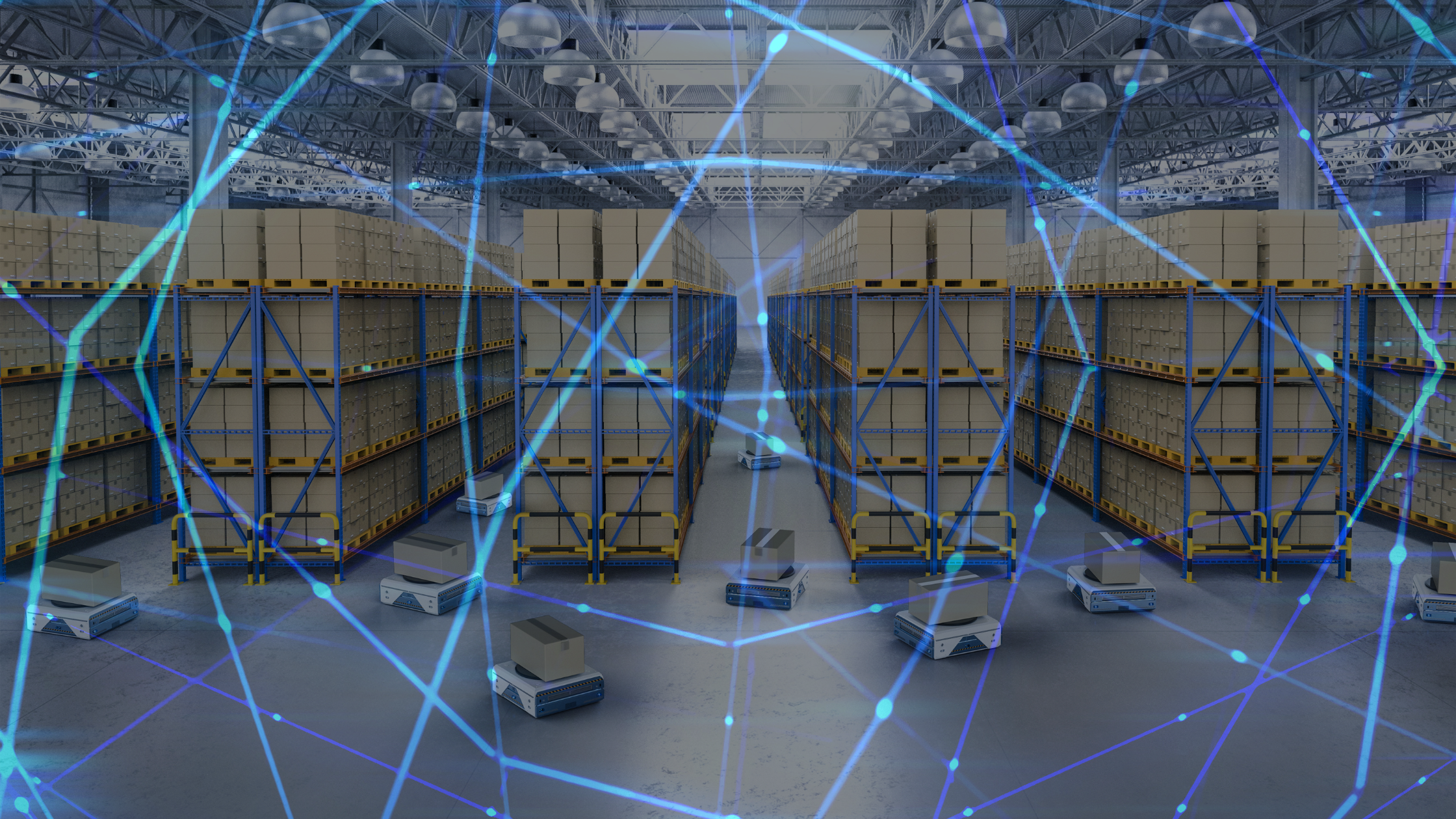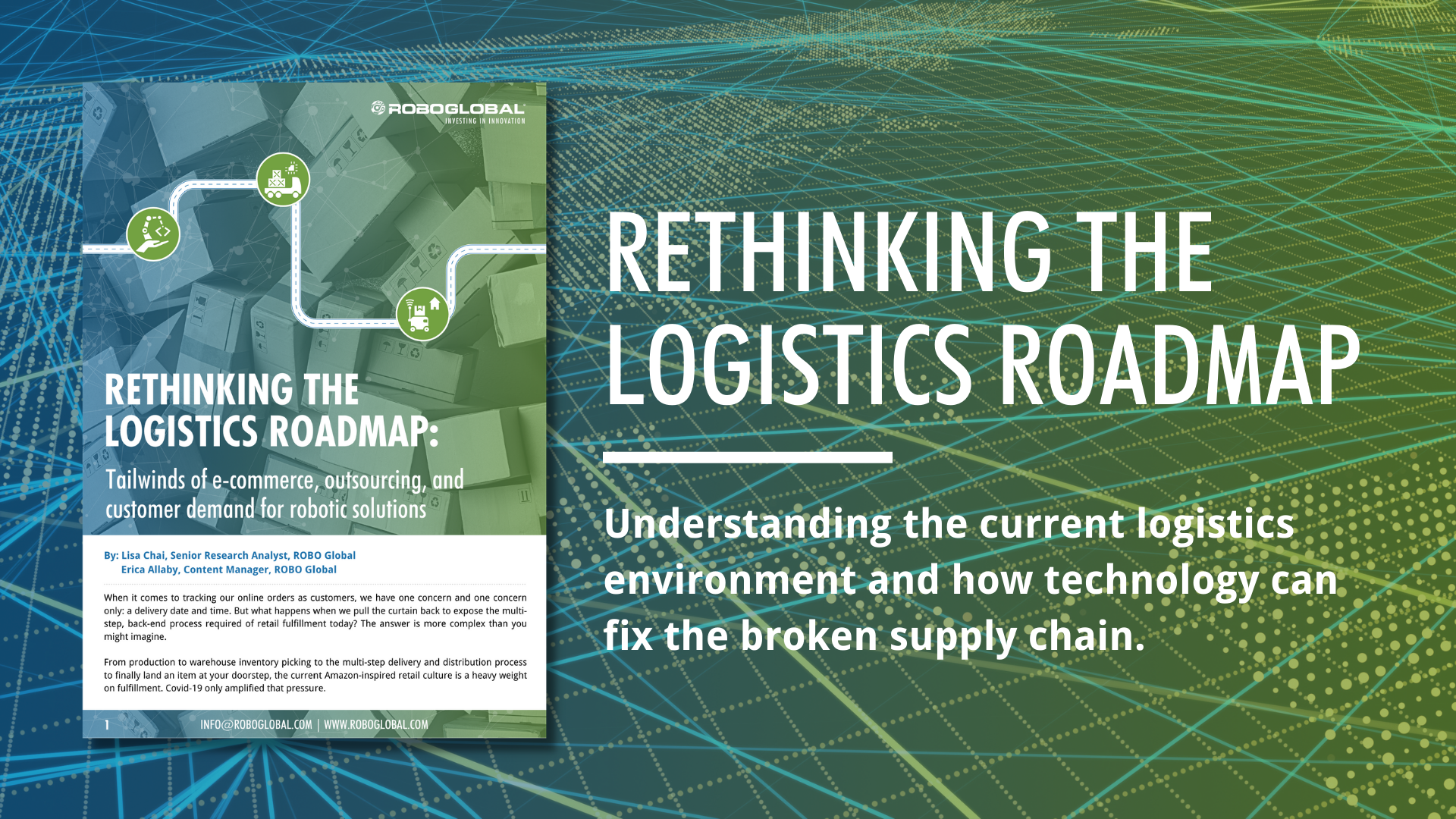By: lllah R. Nourbakhsh, PhD, Professor of Robotics at Carnegie Mellon & ROBO Global Strategic Advisor
We live in a time of global pandemic now. What matters in such a time is not technology, but our humanity. Can we learn to care, to collaborate and to minimize the loss of life globally when business, as usual, will lead to the worst possible outcome? As I write under the current shelter-in-place order, across the space of my corporate and university colleagues I see a common, urgent question:
How can I make a difference?
Underlying this question of self-identity is a fundamental meta-question that interrogates our relationship to history and to the inexorable march of forward progress that technology innovation has celebrated: are we fundamentally better off than 1918? If so, how have our innovations changed the game on how we can battle and defeat a global pandemic?
The answer, as is so often the case, is muddled and unsatisfying. Technology has, without any doubt, leaped forward in these past hundred years. Ironically, computational speed has demonstrated exponential improvements for decades now. Yet COVID-19 also continues to spread at an exponential rate. A fundamental lack of speed and access to critical information has slowed down the global response so thoroughly as to render our scientific and technological advancements powerless to control a pandemic in a meaningful way. It is an outcome that brings us much sorrow.
While we are doing all we can to tackle the challenges of the present-day war against COVID-19, it is vital that we take a step back to look at the bigger picture. We now know that a replay of such a pandemic is nearly inevitable. For that reason, we must use the current outbreak as an opportunity to explore and understand how the technologies of today—particularly in the areas of robotics and artificial intelligence—can be used to control contagion and mitigate the impact of disease in 2030, 2050, and beyond.
Stepping into the Future
So let us enter a time machine. Imagine that we are, finally and blessedly, past the battle of COVID-19. Whether nine months or two years from now, the end of this pandemic will bring us into an era of global introspection, not only investigating what we did wrong this time around but also addressing how we will avoid this arguably avoidable loss of life the next time a disease threatens society. Without a doubt, this deep introspection is going to lead to global action.
Already, we have realized that wet-lab processes for creating detection reagents, identifying viruses, and developing vaccines must be revolutionized immediately, so government funding will be poured into this effort. Another of the many innovations we will demand of our society (or society will demand of us) is a revolution in organic chemistry. Much of the scientific innovation to come will be fueled by robotics and AI. In fact, the next-tech pandemic fighting system will make intimate use of robotics and AI, and the exciting news is that we already have the technologies we need to tremendously influence the trajectory of a future pandemic.
Following are just a handful of the critical ways in which today’s robotics and AI innovations will help us contain viral outbreaks of tomorrow, and create and distribute critical resources during these global events:
Containing Viral Outbreaks
Artificial intelligence will play a critical role in our efforts to contain outbreaks with greater efficiency so that future pandemics spread with far less efficacy.
- Globalized rapid disease data gathering and analytics
To achieve common ground on the exact state of the world during a pandemic, we need the ability to ingest, visualize, and interactively evaluate spatiotemporal data on a massive scale. Real-time, authoritative, common-data practices are essential in order to maximize the capability of country leaders to take action based on accurate information—a capability that has been sorely missing this year. And yet the big data analytics capabilities required to achieve this goal exist today; they are, in fact, the crown jewels of many major multinational consulting corporations that empower businesses by combining big data analytics with interactive visualization. Applying these innovations toward pandemic-related data analytics and the efficient dissemination of this vital information is a critical next step. - Parametric transmission modeling with machine learning
Decision-making during an emergency depends on our ability to understand the possible futures we face so we can analyze the potential impact of every tactical decision we make. By combining deep machine learning, a well-known present-day technology, with parameters of transmissivity, mortality, and societal mixing, health organizations can ‘turn the knobs’ of real-time policy and observe the range of possible outcomes depending on the variation of factors that are unknown at the time, such as a virus’s infection rate. This multi-dimensional search capability is supported by machine learning that optimizes models daily based on real-time data that can be measured, ingested, and used to provide further learning. This continuous cycle must be implemented in the face of the next pandemic, and it will rely on the exact machine learning and parameter exploration technologies used by today’s biggest financial firms. - Sample-based transmission forecasting
Much has been written recently regarding surveillance and the trade-off between privacy and public good at a time of universal emergency. But the trade is, to some extent, a false dichotomy. Privacy-preserving data analytics is a field that has gained significant traction in the past two years, and the algorithms that exist today enable a sample-based, privacy-preserving process for measuring how people move in a society—and how a pandemic is likely to be spreading. Measurements such as death are lagging indicators of a pandemic’s spread. But feed-forward models take this capability one step further, using lagging indicators and encrypted, sampled details of each citizen’s travel to create specific forecasts of present and future spread. This process is analogous to how the weather is forecast, but, in this case, it is used to forecast pandemic patterns rather than weather patterns. It will be a critical capability in the future, enabling is to stay ahead of trends as they develop, rather than playing catch-up using data that is two-weeks stale every day.
Creating & Distributing Critical Resources
Robotics and AI will also make it possible to deliver essential goods and services to a society that is unable to function normally for weeks or months at a time, as well as support the treatment of critical-care patients who have fallen ill to a virus.
- Local rapid manufacturing launch control
We now know that global supply chains will always be under threat during a pandemic, and our small-world mentality fails under such dire conditions. During the COVID-19 pandemic, shortages and distribution issues have disrupted delivery of medical masks and ventilators to hospitals, as well as sanitizers and toilet paper to our homes. The solution: the ability to create physical solutions instantly, locally, and in high volume—and to do so globally to empower every city to create the equipment and goods it needs almost instantly. Meeting this challenge requires automated, highly reconfigurable computer-operated additive and subtractive manufacturing lines, and the distribution of these capabilities broadly across societies. The technology required to reconfigure local manufacturing in this way is not science fiction; it is utterly doable and is a highlight of the robotic manufacturing revolution that already well underway. Dual-purpose local robotic manufacturing is a must now. As a planet, we must forge a plan to create such a network in the next ten years. This is an achievable and greatly significant goal for our children’s safety as we reach into the future. - Negative pressure conversion solutions
Any communicable disease demands surge planning for isolation—and the isolation we need is pressure-based. Negative-pressure isolation rooms prevent the spread of airborne viruses and bacteria by maintaining a lower pressure inside the room than the pressure outside the room. This keeps air flowing into the room from outside, and contains contaminated particles. To battle COVID-19, many communities are rapidly converting hotel rooms and hospital rooms to negative-pressure isolation chambers so that cross-contamination can be limited, both between patients and between patients and care staff. Significantly, when negative pressure chambers are in place, far less invasive oxygen-providing equipment is needed to care for patients. This can greatly increase the number of patients that can be served, helping to avoid the heartbreaking reality we now see in Italy where physicians must turn some patients away in order to save others. Creating these conversion solutions depends on robotic rapid manufacturing and real-time sensing, and on the ability to create filters, fans, and other materials instantly and locally when needed. Once again, this capability is available today. Meeting the challenge requires deploying a standing army of robotic rapid manufacturing centers in major population centers around the world. - Needs acquisition, analysis, and response scheduling
Beyond infected patients, care must also be provided to all vulnerable and at-risk populations, and this has been an extensive challenge to communities the world over during COVID-19. At a fundamental level, this requires mapping needs across cities to match them with available solutions—for everything from in-home childcare for a nurse’s children, to emergency insulin for a vulnerable adult at home alone. We can address this challenge by applying readily available supply chain optimization technologies that are used to manage the global movement of goods and services to get ‘the right goods to the right place at the right time’ at the human level. This reinvented data architecture would optimize the matching of demand and supply continuously over the course of an outbreak. This is information management and information-based supply chain optimization at its best—and the AI-based technologies required are available now. - Automated delivery optimization
The matching of demand and supply brings us to the problem of delivering goods and services directly to a population under lockdown while maintaining the most hygienic of circumstances possible. Nothing serves this need better than automated robotic delivery. Outstanding drone-based and robot-based solutions have been piloted, from food delivery in crowded city centers to vaccine delivery in central Africa. Now is the time to push these robotics technologies further to support whole-city delivery that would enable the emergency deployment of goods in a consistent, reliable, and safe manner. Robotics is ready for this challenge, and our innovators must rise to this challenge now.
Robotics and AI: Enabling a Stronger, Healthier Future
The story of humanity is the story of overcoming adversity. Today, the adversity facing us—and the ways in which it has tested our resolve—are historic and, in many ways, disappointing in the extreme. We can do better, and we will. Innovation of every kind is critical, but even the most powerful technology advancements can only be wholly effective when combined with strong leadership and wise decision-making at every level of government and business. Robotics and AI will be essential ingredients as we strive to create a next-tech pandemic fighting system that enables us to avoid repeating the horror of the Spanish Flu of the past century, and the present-day disaster of COVID-19.
At the moment, we’re each asking, “How can I make a difference?” The answer is clear: invest the time, talent, and resources to continue to advance robotics and AI technologies, and to define new methods to deploy advanced technologies to contain viral spread and to consistently get the right resources to the right place at the right time. We have the tools at hand. What we must do now is use them to benefit future generations.
ROBO Global currently offers three innovative index portfolios, including our Robotics & Automation Index (ROBO), Healthcare Technology & Innovation Index (HTEC), and Artificial Intelligence Index (THNQ). To learn more, visit our website at www.roboglobal.com.
About lllah R. Nourbakhsh, PhD
A valuable member of the ROBO Global Strategic Advisory Board, Illah is a Professor of Robotics at Carnegie Mellon University, as well as the director of Carnegie Mellon’s CREATE Lab, which explores socially meaningful innovation and deployment of robotic technologies. He has served as Robotics Group lead at NASA/Ames Research Center, and he was a founder and chief scientist of Blue Pumpkin Software, Inc. His current research projects explore community-based robotics, including educational and social robotics and ways to use robotic technology to empower individuals and communities.
Illah is the CEO and Chairman of Airviz, Inc., a World Economic Forum Global Steward, a member of the Global Future Council on the Future of AI and Robotics, and a member of the IEEE Global Initiative for the Ethical Considerations in the Design of Autonomous Systems. He also serves on the Global Innovation Council of the Varkey Foundation and is a Senior Advisor to The Future Society, Harvard Kennedy School. He earned his BS, MA, and PhD degrees in computer science from Stanford University and is a Kavli Fellow of the National Academy of Sciences. His book Robot Futures is available on Amazon.





